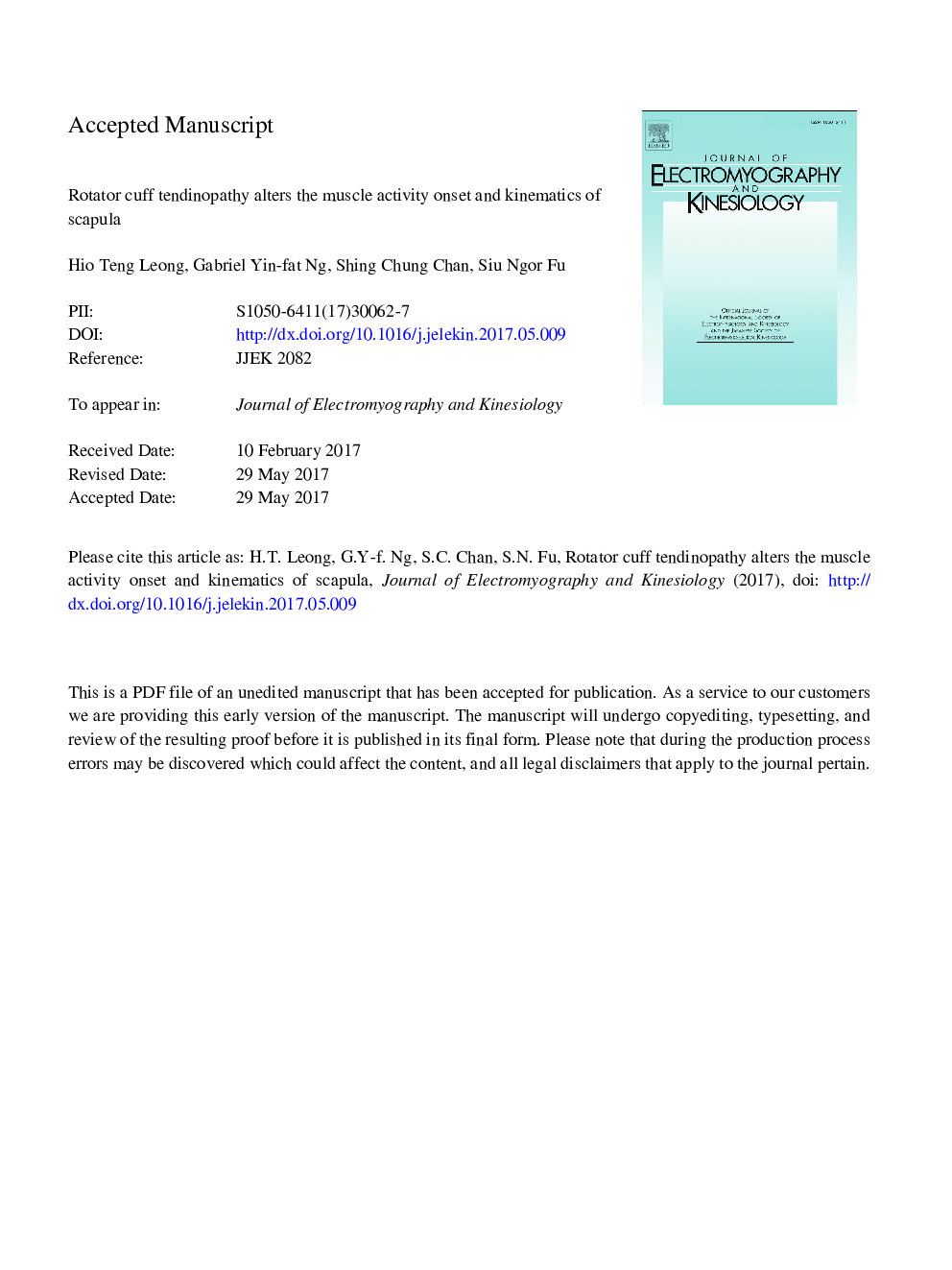| Article ID | Journal | Published Year | Pages | File Type |
|---|---|---|---|---|
| 5709511 | Journal of Electromyography and Kinesiology | 2017 | 26 Pages |
Abstract
Athletes with rotator cuff (RC) tendinopathy demonstrate an aberrant pattern of scapular motion which might relate to deficits in the scapular muscles. This study aimed to determine whether alteration in scapular kinematics is associated with deficits in the activity onset of scapular muscles. Forty-three male volleyball players (17 asymptomatic and 26 with RC tendinopathy) joined the study. Three-dimensional scapular kinematics was quantified using an acromial marker cluster method. The activity onset of the upper (UT), middle (MT), and lower trapezius (LT), and serratus anterior (SA) during arm abduction was assessed with electromyography. Athletes with RC tendinopathy demonstrated less scapular upward rotation (6.6 ± 2.3 vs. 8.2 ± 1.1°, p = 0.021) in the early phase of shoulder abduction from 0° to 30° when compared to asymptomatic athletes. The tendinopathy group had delayed activity onset of LT (14.1 ± 31.4 ms vs. 74.4 ± 45.1 ms, p < 0.001) and SA (â44.9 ± 26.0 ms vs. 23.0 ± 25.2 ms, p < 0.001) relative to UT when compared to the asymptomatic group. In asymptomatic athletes, earlier activity onset of MT and LT relative to UT was associated with more scapular upward rotation during 0-30° of abduction (r = 0.665, p = 0.021) and 30-60° of abduction (r = 0.680, p = 0.015), respectively. Our findings showed the control of the scapular upward rotation is related to the activity onset of the scapular muscles in athletes.
Related Topics
Health Sciences
Medicine and Dentistry
Orthopedics, Sports Medicine and Rehabilitation
Authors
Hio Teng Leong, Gabriel Yin-fat Ng, Shing Chung Chan, Siu Ngor Fu,
